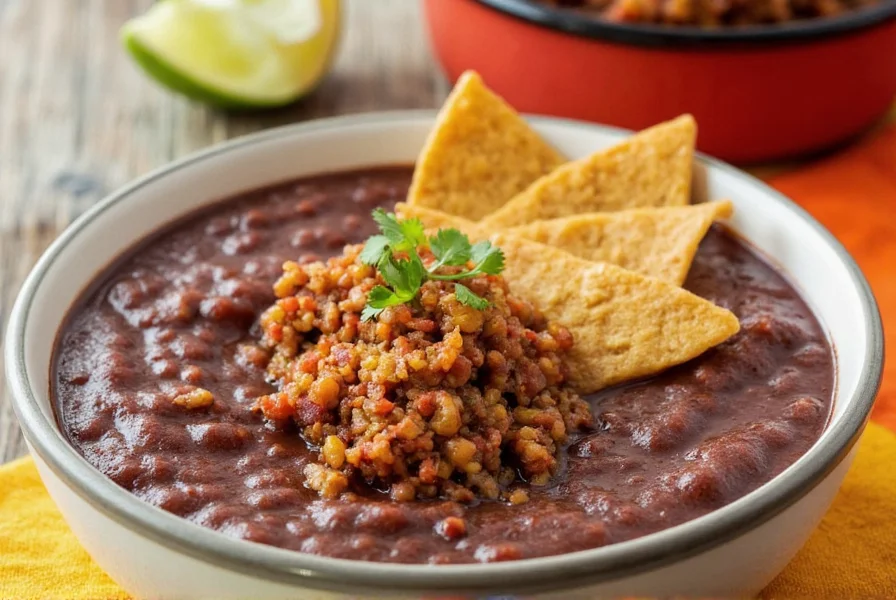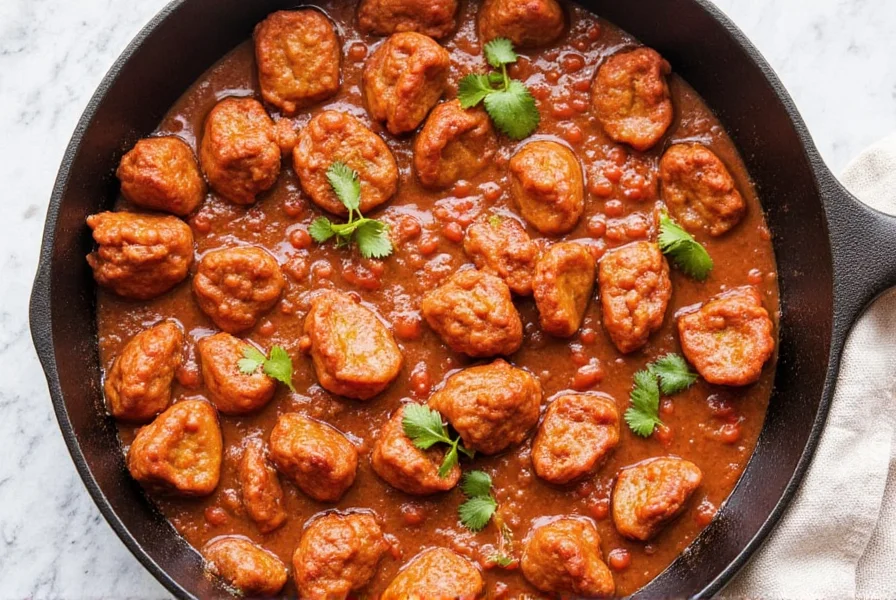Table of Contents
Introduction to Mole Sauce
Mole sauce is a traditional Mexican sauce made from a blend of chiles, chocolate, nuts, spices, and other ingredients. It is not related to the animal mole, despite the similar name. This complex sauce has deep cultural roots in Mesoamerican cuisine and is celebrated for its rich, layered flavors. Whether you're a home cook or professional chef, understanding mole sauce unlocks a world of authentic Mexican culinary traditions.

What Is Mole Sauce?
The term "mole" comes from the Nahuatl word mōlli, meaning "sauce." Mole sauce is one of the most intricate preparations in global cuisine, often requiring hours to craft. It combines dried chiles (like ancho, pasilla, or mulato), tomatoes, garlic, onions, nuts, seeds, spices, and sometimes chocolate to create a deeply savory and nuanced flavor profile.
Contrary to common misconceptions, mole sauce does not contain animal ingredients (it is not made from the mammal "mole"). The sauce varies by region in Mexico, with each area developing unique recipes that reflect local ingredients and traditions. For example, Puebla's Mole Poblano is famous for its use of chocolate, while Oaxaca's seven varieties showcase regional diversity.

Types of Mole Sauce
Mole sauce varies significantly across Mexico, with each type offering distinct flavors and uses. Here are the most renowned varieties:
- Mole Poblano: Originating from Puebla, this iconic sauce features dried chiles, chocolate, almonds, cinnamon, and cloves. It has a deep red color and balanced sweet-spicy profile.
- Mole Negro: From Oaxaca, this darkest mole includes multiple chiles (like chipotle), sesame seeds, plantains, and chocolate. It has intense smoky depth and complexity.
- Mole Verde: A vibrant green sauce made with fresh tomatillos, cilantro, pumpkin seeds, and green chiles. It's lighter and brighter, perfect for poultry or seafood.
- Mole Rojo: A red mole using tomatoes and dried red chiles, offering bold, tangy flavors with moderate heat.
- Mole Amarillo: Made with yellow chiles and pumpkin seeds, this creamy, nutty sauce has a distinctive earthy flavor.
Each type serves different culinary purposes, from festive occasions to everyday meals. Authentic mole sauces often follow centuries-old recipes passed down through generations.
Practical Tips for Cooking with Mole Sauce
Whether using store-bought or homemade mole sauce, these tips ensure optimal results:
- Use as a base for proteins: Simmer chicken, pork, or turkey in mole sauce for traditional dishes like "pollo en mole."
- Enhance vegetables and grains: Drizzle over roasted vegetables or mix into rice for added depth.
- Pair with tortillas: Serve with warm corn tortillas for authentic tacos or enchiladas.
- Adjust heat levels: Reduce chile quantity or choose milder varieties (like Mole Verde) for less spice.
- Proper storage: Refrigerate in airtight containers for up to 7 days or freeze for 6 months. Flavors improve after 24 hours.
Remember: Authentic mole balances sweetness, spice, and acidity. Experiment with ratios to match your taste while respecting traditional foundations.
| Product Name | Features | Advantages | Use Cases | Target Audience | Suitable Occasions |
|---|---|---|---|---|---|
| Mole Poblano by La Michoacana | Classic recipe with chocolate, almonds, and spices | Rich, complex flavor; ideal for traditional dishes | Chicken mole, enchiladas, tamales | Cooking enthusiasts, traditionalists | Family dinners, special occasions |
| Dark Mole by El Tamarindo | Darker, smokier, and more intense | Deep flavor with notes of chocolate and charred chiles | Pork dishes, beef stews, tacos al pastor | Spice lovers, experienced cooks | Festive meals, dinner parties |
| Green Mole by Salsa de Olla | Fresh and herbaceous | Lighter, brighter flavor with a hint of tang | Seafood, grilled veggies, rice dishes | Health-conscious eaters, light meal lovers | Lunches, casual gatherings |
When selecting mole sauce, prioritize products with natural ingredients and minimal preservatives. For authentic results, choose brands that specify regional origins (e.g., "Oaxacan Mole Negro").
Frequently Asked Questions
What is mole sauce exactly?
Mole sauce is a traditional Mexican sauce made from chiles, chocolate, nuts, spices, and other ingredients. It is not related to the animal mole. The word "mole" comes from the Nahuatl word "mōlli," meaning "sauce."
Is mole sauce really made with chocolate?
Yes, many traditional mole recipes (like Mole Poblano and Mole Negro) include unsweetened Mexican chocolate. However, it provides depth rather than sweetness. Varieties like Mole Verde and Mole Amarillo typically do not contain chocolate.
How do you pronounce "mole"?
Mole is pronounced "moh-lay" (IPA: /ˈmoʊ.leɪ/). This differs from the English word "mole" (the animal), which rhymes with "hole." The correct pronunciation reflects its Nahuatl origins.
What's the difference between mole and guacamole?
Despite similar names, they're distinct. Guacamole is a simple avocado-based dip, while mole is a complex sauce requiring dozens of ingredients and hours of preparation. "Guacamole" comes from Nahuatl "āhuacamōlli" (avocado sauce), while "mole" means "sauce" in Nahuatl.
Is mole sauce always spicy?
No. While chiles are used, mole balances heat with ingredients like chocolate, nuts, and seeds. Many varieties (e.g., Mole Poblano) are moderately spicy with rich, nuanced flavors rather than pure heat. Spice levels can be adjusted by choosing specific types or modifying recipes.
What's the most traditional way to serve mole?
Traditionally, mole is served over turkey or chicken ("guajolote en mole" or "pollo en mole") with white rice and warm corn tortillas. This preparation highlights the sauce's complexity while complementing its rich flavors with simple staples.
How long does homemade mole last?
Homemade mole lasts up to 1 week refrigerated in airtight containers or 6 months frozen. The flavors often deepen after 24 hours. When reheating, add water or broth to restore consistency.
Conclusion
Mole sauce represents the heart of Mexican culinary heritage—a complex, culturally significant preparation that blends indigenous and colonial influences. Its rich history and diverse regional variations make it more than just a sauce: it's a celebration of tradition, craftsmanship, and flavor.
Whether using store-bought or homemade mole, focus on quality ingredients and traditional techniques to honor its legacy. With proper understanding and respect for its origins, mole sauce can elevate any dish while connecting you to centuries of Mexican gastronomy.












 浙公网安备
33010002000092号
浙公网安备
33010002000092号 浙B2-20120091-4
浙B2-20120091-4